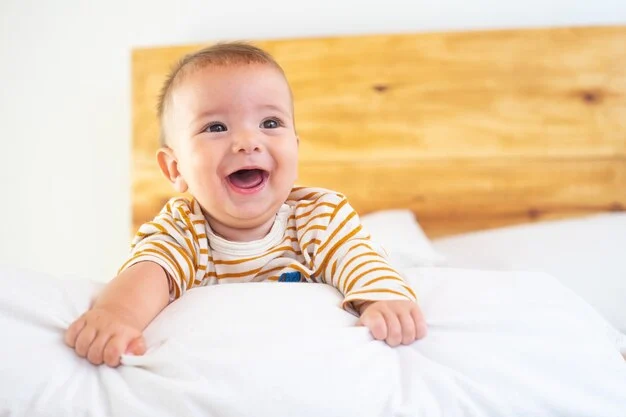She was hunched over in pain, one hand clutching her belly while the other braced against the wall. I was being wheeled out of the operating room after an emergency C-section, lying flat on my back. In a fleeting moment of coincidence, my friend and I crossed paths in the hospital hallway. But just as quickly as she appeared, she was gone, left behind to endure the trials of labor while I was whisked away to recovery.
Hours later, our daughters entered the world just a few doors apart. Those precious early days of motherhood were spent close to one another, united by the joy of our newborns. We held them tightly, fell head over heels in love, and dreamed of their futures, blissfully unaware that one life would face unimaginable challenges.
I didn’t think about our brief hallway encounter again until recently when my friend shared a poignant video on social media. The screen was filled with joyful images of her daughter, Lily, but then text began to overlay those smiles: “Degenerative. Fatal. No Cure.”
Seven years after that hospital moment, and just months after her heartbreaking post, we found ourselves driving to lunch. While chatting, my friend casually mentioned, “August 26, 2013,” and I realized this date was significant—it was the day Lily was diagnosed.
On that day, my friend and her husband, Mark, learned that their 5-year-old daughter had a terminal degenerative neurological disease called juvenile GM1 gangliosidosis. There was no treatment, no cure. They were completely blindsided, having been reassured that Lily’s speech and motor skills were developing normally despite the challenges.
As we waited to enter the restaurant, I started talking about my own 7-year-old daughter. After a few moments, I caught myself saying, “You know how it is with 7-year-old girls.” Without missing a beat, my friend replied, “Actually, I don’t. Lily is more like a 4-year-old. She doesn’t have friendships like other kids do. No playdates. We went to a birthday party recently where the other 7-year-olds were lovely, but she couldn’t keep pace. They ended up caring for her more than playing together.” And that’s when it hit me.
Juvenile GM1 is a slow, relentless disease that destroys nerve cells in the brain and spinal cord. My friend described its progression as “inhumane” and “cruel.” They hope for more years with Lily, maybe even into her teens or twenties, but the uncertainty looms large. She explained that by ages 9 or 10, many children with this condition lose their ability to speak, swallow, and move. Some may even become blind or deaf—the list of complications is daunting.
Throughout our conversation, my friend remained composed, speaking with clarity and empathy. But as we left the restaurant and approached my car, I caught a glimpse of her vulnerability. She pondered aloud, “What will I say if this goes tragically? I think about what I may have to post on social media. Right now, I try to keep everything positive.”
What she shares online matters greatly. It has led to the creation of a foundation she and Mark established after coming to terms with Lily’s diagnosis. “At first, one of us was crying every single day. It can really shatter you for months. Mark was hesitant to tell anyone—worried it would reach Lily or her younger brother, who doesn’t have the disease. Then you start processing things, researching as a coping mechanism. I organized information and proactively sought services for her.” They also launched fundraising efforts to support medical research and find a cure.
In just seven months, my friends raised an impressive $485,000 for their nonprofit, the Cure GM1 Foundation, with a goal of reaching $1 million. The scientists they’ve funded are working towards a clinical trial in 2017 that could potentially cure children in a single treatment.
For Lily, time is of the essence. She takes experimental medications and adheres to a special diet to slow the disease’s progression. If the treatments succeed, they could be right on the brink of clinical trials.
I asked my friend if she holds hope for Lily. She paused for a moment and replied, “My hope is measured. We know the odds. We try to maintain optimism because it’s a better way to live. None of us know how much time we have left, so we focus on the little things—smiles, cuddles, dancing with her.”
I wanted to tell her she’s a hero, that her efforts for Lily and the rare disease community are nothing short of inspiring. I wanted to say I couldn’t imagine how she handles it, and that I might crumble under such pressure. But I knew how she would respond—she’d probably get annoyed and say that any parent would do the same in her situation.
So instead, I’ll say this: You are an incredible mom. You remind us that the essence of parenting is about cherishing today. For all of us, that’s all we can truly count on.
For further reading on pregnancy and home insemination, check out this excellent resource on fertility. And if you’re interested in more about creating a family, you might find this home insemination kit helpful.
Summary:
This heartfelt reflection explores the unexpected challenges of parenting through the lens of a mother, Jamie, who reconnects with her friend, Kelly, years after they shared a hospital moment. Kelly’s daughter, Lily, faces a terminal illness, and through their conversation, Jamie learns about the complexity of living in the moment and the resilience of parents facing such trials. The story highlights the importance of cherishing every day and the remarkable efforts of families fighting for their children’s futures.
